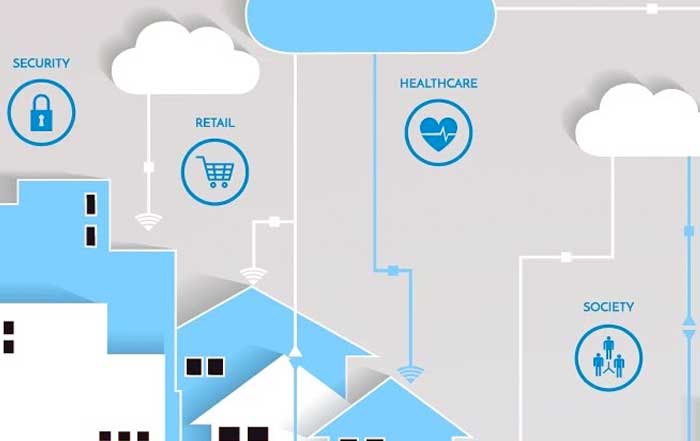Already the evolution of global retail has reached a pivotal point where the traditional brick-and-mortar model coexists with, but no longer dominates, the expanding e-commerce landscape. The rise of online shopping has transformed how consumers engage with brands, how logistics systems operate, and how digital platforms connect supply chains across continents. This transformation is not merely a result of convenience or price competitiveness but reflects deeper societal and technological changes driven by digitization, innovation, and the global integration of markets.
The global e-commerce industry surpassed $6.5 trillion in annual sales in 2024, with projections indicating it could exceed $8 trillion by 2027. The growth is being accelerated by technological innovation, particularly through the integration of artificial intelligence, cloud-based infrastructure, and real-time logistics management systems. As reported by Statista, more than 22% of total retail sales worldwide are now generated online, a figure that continues to rise steadily each year as consumers become increasingly comfortable with digital payments and virtual shopping environments. Learn more about these emerging transformations in the business sector.
The Technological Foundation Powering E-Commerce Growth
The backbone of e-commerce expansion lies in the relentless evolution of technology. From AI-powered recommendation engines to personalized shopping assistants, online retailers have turned to machine learning and data analytics to deliver superior customer experiences. Major players like Amazon, Etsy, Alibaba, and Shopify continue to set benchmarks for personalization, speed, and reliability by leveraging big data to anticipate consumer preferences even before purchase intent is explicitly expressed.
Additionally, cloud computing has democratized access to scalable infrastructure, enabling even small businesses to compete in global markets. The Internet of Things (IoT) further enhances inventory tracking, warehouse automation, and delivery optimization, ensuring a seamless end-to-end experience for both sellers and consumers. Technologies such as 5G networks have also contributed by significantly reducing latency, enabling real-time updates on product availability, and facilitating smoother mobile transactions. Readers interested in these advancements can explore related insights in technology.
One of the most profound shifts has been the integration of artificial intelligence in visual search and conversational commerce, allowing users to find products by uploading photos or chatting with AI agents. Retailers such as Zalando and Sephora are pioneers in these experiences, merging visual data with predictive analytics to redefine how people discover and buy products online. Learn more about how this innovation affects modern society by visiting innovation.
Mobile Commerce and the Role of Connectivity
The mobile-first era has been instrumental in shaping global e-commerce trends. With more than 6.9 billion smartphone users worldwide in 2025, mobile devices have become the dominant gateway to digital commerce. Platforms like TikTok Shop, Instagram Checkout, and WeChat Pay demonstrate how social media ecosystems are evolving into direct commerce channels, merging entertainment with instant purchasing.
In regions like Southeast Asia, Africa, and Latin America, the penetration of affordable smartphones and mobile internet has created a new generation of digital consumers. Payment platforms such as PayPal, Stripe, Razorpay, and Alipay have further reduced friction in online transactions, enabling rapid adoption of mobile shopping even in emerging economies. Consumers now expect instant access, one-click payments, and transparent delivery tracking—all made possible by advancements in mobile connectivity and data-driven personalization. Discover related insights on consumer lifestyles in lifestyle.
Moreover, the expansion of 5G technology has revolutionized online retail logistics. With faster speeds and reduced latency, consumers can stream product demos, participate in real-time auctions, and even engage with immersive augmented reality storefronts. The European Union, South Korea, and Singapore lead in 5G-driven commerce, fostering ecosystems where small enterprises leverage fast, reliable networks to compete internationally.
The Rise of Social Commerce and Influencer Economies
The growth of social commerce represents one of the most transformative aspects of e-commerce evolution. Consumers increasingly rely on peer recommendations, influencer endorsements, and live-streamed product showcases to make purchasing decisions. This dynamic shift is particularly prominent in China, where Douyin (TikTok’s Chinese counterpart) and Taobao Live dominate the interactive shopping market. In the United States and Europe, Instagram, YouTube, and Pinterest continue to reshape brand-consumer relationships through creator-driven commerce.
The integration of AI-based influencer analytics tools allows brands to select the right content creators whose audience demographics match their target markets. Meta, for instance, now uses algorithmic insights to help businesses optimize collaborations with influencers, ensuring measurable conversion results. Learn more about these cultural transformations in culture.
As consumer trust gravitates toward authenticity and relatability, influencers have emerged as powerful mediators of brand perception. The modern consumer journey often begins not with a search engine but with a social media scroll—where a familiar face demonstrates a product in real time. This trend highlights a broader cultural evolution: e-commerce is no longer a mere transactional process but a socially embedded experience combining entertainment, community, and consumption.
Global Market Dynamics and Regional Trends
North America and Europe
In North America, the United States remains the epicenter of e-commerce innovation, led by Amazon, Walmart, and Etsy, along with rapidly expanding direct-to-consumer brands such as Warby Parker and Glossier. The focus has shifted toward sustainability, ethical sourcing, and transparency, with consumers increasingly demanding to know where products come from and how they are made. Learn more about responsible business practices in sustainable.
Europe, on the other hand, has embraced digital commerce with a strong emphasis on privacy and regulation. The General Data Protection Regulation (GDPR) framework continues to shape how companies handle user data, fostering a climate of trust in digital transactions. Countries like Germany, France, and the Netherlands are leading in cross-border e-commerce, enabling businesses to reach consumers across the continent seamlessly through initiatives like the European Digital Single Market.
Asia-Pacific and Emerging Markets
The Asia-Pacific region remains the world’s fastest-growing e-commerce hub, driven by the dominance of Alibaba, JD.com, Rakuten, Shopee, and Tokopedia. The cultural integration of online shopping with daily life is unmatched, where live-streamed product promotions and real-time interactions have become commonplace. In Japan and South Korea, the convergence of technology and retail has led to an ecosystem where nearly every aspect of commerce is digitized—from virtual fitting rooms to cashless kiosks.
Emerging economies such as India, Vietnam, and Indonesia are witnessing rapid digital transformation, supported by government initiatives that promote internet penetration and digital literacy. The Unified Payments Interface (UPI) system in India and QR code-based payments in Indonesia have revolutionized how small merchants engage with the digital economy. To understand the societal implications of these trends, readers can explore more on society.
E-Commerce Evolution Timeline
The Digital Transformation of Global Retail
Latin America, Africa, and the Middle East
In Latin America, e-commerce has surged due to improved logistics networks and fintech innovation. Mercado Libre and Nubank have emerged as regional champions, providing secure and scalable online payment solutions that cater to millions of first-time digital buyers. Similarly, Africa’s growth story is driven by mobile banking platforms like M-Pesa, enabling access to online marketplaces even in areas with limited banking infrastructure. The Middle East, led by Saudi Arabia and the United Arab Emirates, has positioned itself as a digital commerce hub for cross-border luxury and fashion trade, leveraging its advanced logistics systems and high smartphone adoption rates.
These regional patterns underscore a crucial insight: while technology is the common denominator, the cultural and economic contexts in which e-commerce grows remain deeply local.
Sustainability, Ethics, and the Conscious Consumer
In 2025, sustainability has become an integral pillar of the global e-commerce ecosystem. Modern consumers, empowered by transparency and digital literacy, increasingly expect companies to adhere to ethical business standards, environmentally responsible production methods, and fair labor practices. This shift has transformed e-commerce into a mirror reflecting the world’s growing consciousness about climate change, resource scarcity, and social justice. Companies that fail to integrate sustainability into their operations risk losing both market share and consumer trust. Learn more about evolving environmental commitments at environment.
Organizations such as Patagonia, IKEA, and Nike have led the movement toward circular supply chains and carbon-neutral logistics. Their strategies include investments in renewable energy, low-emission packaging, and AI-enabled resource tracking systems. Amazon, under its Climate Pledge, has accelerated efforts to reach net-zero carbon emissions across its vast logistics network by 2040, a decade ahead of the Paris Agreement goals. Meanwhile, Shopify’s Sustainability Fund continues to support emerging carbon removal technologies, setting new standards for environmental responsibility in digital commerce.
The integration of eco-certifications, blockchain-based traceability, and AI-driven waste management tools has made it possible for consumers to validate sustainability claims independently. This transparency enables trust in digital transactions, reinforcing long-term loyalty. Moreover, emerging platforms like Etsy and Depop represent the growing appetite for secondhand, artisanal, and upcycled goods, bridging creativity with environmental stewardship. These developments highlight how e-commerce has evolved from being purely profit-driven to becoming a key driver of global sustainability efforts. Readers can explore further discussions on ethical innovation at ethics.
Logistics Reinvented: The Future of Delivery Systems
The logistics revolution underpins the efficiency and scalability of the e-commerce ecosystem. By 2025, the world has witnessed remarkable transformations in how products move from factory floors to front doors. Innovations in autonomous delivery systems, drone logistics, and hyper-local distribution centers have redefined expectations of speed and convenience.
Companies like FedEx, UPS, and DHL have adopted AI-powered predictive models that optimize delivery routes in real time, reducing emissions and operational costs. Amazon Prime Air and Alphabet’s Wing continue to test aerial drone deliveries in select cities, significantly cutting down delivery times for small, high-demand items. Learn more about technology’s role in logistics advancements at technology.
In major cities such as London, Singapore, and Los Angeles, micro-fulfillment centers have become the backbone of rapid e-commerce growth. These compact warehouses, powered by robotics and machine vision, allow same-day or even one-hour delivery options. Ocado, a British pioneer in automated fulfillment technology, has inspired similar models worldwide. Meanwhile, Tesla’s Semi Trucks and Rivian’s electric delivery vans, used by companies like Amazon and UPS, are helping the logistics industry achieve unprecedented levels of energy efficiency.
On a global scale, the Belt and Road Initiative by China has strengthened cross-border e-commerce trade routes across Asia, Africa, and Europe, reducing shipping bottlenecks and expanding trade opportunities for small enterprises. In Africa, local logistics startups such as Kobo360 and Sendy are digitizing freight operations, connecting shippers with truckers through smartphone platforms. Such innovations illustrate how digital transformation and physical infrastructure development now work hand in hand to sustain global e-commerce growth. Readers interested in international trade and mobility can explore world.
The Rise of the Digital Consumer Experience
In today’s marketplace, digital experiences are no longer just an add-on—they are the heart of brand identity and consumer engagement. E-commerce platforms in 2025 are immersive, emotionally resonant, and deeply personalized. The fusion of augmented reality (AR), virtual reality (VR), and metaverse ecosystems has redefined how consumers interact with products online. From trying on clothes virtually to visualizing furniture in 3D before purchase, customers now expect multi-sensory shopping journeys.
Apple, Meta, and Google have all launched immersive commerce technologies that enable shoppers to interact with products through their smart devices and AR glasses. Virtual showrooms powered by Unity and Unreal Engine provide hyperrealistic environments where brands like Gucci and Nike host digital product launches, limited-edition releases, and even NFT-based fashion drops. These immersive experiences blend art, commerce, and technology into seamless digital storytelling.
The evolution of voice commerce—driven by devices like Amazon Alexa, Google Assistant, and Apple’s Siri—further personalizes the consumer experience. Customers can now complete entire shopping journeys hands-free, guided by AI systems capable of learning from behavioral patterns, previous purchases, and contextual preferences. This symbiosis between data and design underscores the importance of user-centric innovation in shaping the next chapter of e-commerce. Readers can learn more about digital transformation in business at business.
Data Privacy, Cybersecurity, and Consumer Trust
As digital transactions multiply, so do the challenges associated with data privacy, security, and consumer protection. The sheer volume of information collected across e-commerce platforms—ranging from purchase history to biometric identifiers—demands robust security frameworks and transparent governance policies. In 2025, cybersecurity has evolved into one of the most critical pillars supporting the credibility of online commerce.
Regulatory bodies worldwide, including the European Data Protection Board and the Federal Trade Commission (FTC), continue to enforce stricter compliance standards to protect consumer data. Meanwhile, emerging technologies like blockchain and zero-knowledge proofs are being adopted to enhance transaction security and minimize fraud. Learn more about how these technologies impact global governance in education.
Companies such as Shopify and Stripe are investing heavily in end-to-end encryption and tokenization to ensure safe payment experiences for users across regions. Moreover, AI-driven threat detection systems are now capable of identifying fraudulent behavior in real time, making cyberattacks less effective and reducing risks for consumers.
However, the rise of digital commerce has also reignited debates over ethical data collection. Consumers are increasingly aware of how their personal information is used to shape recommendations, pricing strategies, and advertisements. Transparency reports and ethical AI practices have thus become essential for building lasting brand trust in the digital age.
E-Commerce and Global Economic Transformation
E-commerce is no longer a standalone retail model—it is a fundamental engine of global economic transformation. Its influence extends to employment, manufacturing, logistics, marketing, and even policy-making. In 2025, millions of small and medium-sized enterprises (SMEs) rely on online marketplaces to access global audiences, bypassing traditional intermediaries. This has reshaped trade flows and redefined what it means to participate in the global economy. Learn more about how this shift impacts global systems at world.
Governments in the United States, Singapore, Germany, and Australia have implemented digital trade agreements that facilitate seamless cross-border e-commerce by reducing tariffs, simplifying customs processes, and standardizing data-sharing protocols. The Digital Economy Partnership Agreement (DEPA), led by Singapore, is a pioneering example of international cooperation designed to regulate digital trade fairly and transparently.
Meanwhile, emerging economies are leveraging e-commerce to accelerate development and create inclusive growth. Initiatives by UNCTAD, World Bank, and African Development Bank have empowered entrepreneurs with the tools, training, and digital infrastructure necessary to enter the global marketplace. This democratization of commerce represents a pivotal moment in human economic history—one where opportunity is no longer bound by geography.
The Convergence of AI, Automation, and Human Insight in E-Commerce
Artificial intelligence has moved far beyond predictive algorithms—it now forms the strategic core of global commerce. In 2025, the most successful e-commerce platforms are those that have seamlessly integrated AI into every layer of their operations, from product design to delivery. Amazon, Alibaba, and JD.com have already established the benchmark for algorithmic commerce, where every consumer interaction feeds back into an intelligent system designed to enhance future engagement. This evolution demonstrates how digital transformation now depends on collaboration between automation and human creativity.
AI-driven personalization models analyze millions of data points—from browsing behavior and social media activity to environmental context—to offer hyper-relevant shopping experiences. For example, Google Cloud AI and Microsoft Azure Cognitive Services provide retailers with cloud-based solutions that process vast consumer datasets to anticipate demand trends with remarkable accuracy. Automation also extends to customer service, where intelligent chatbots, virtual concierges, and emotion-recognition engines replace static FAQs with adaptive, human-like interactions that evolve with each user’s tone and preference. Learn more about this digital-human fusion in technology.
The adoption of AI-powered visual merchandising has further transformed online stores into living digital organisms that adapt their layouts in real time. Dynamic pricing engines—used by companies such as Uber, eBay, and Airbnb—have entered mainstream retail, ensuring competitive pricing that responds instantly to market fluctuations, consumer interest, and seasonal trends. However, this reliance on automation brings new ethical responsibilities. The potential for algorithmic bias, privacy violations, and manipulation underscores the urgent need for transparent governance frameworks that protect consumer autonomy while allowing businesses to innovate responsibly. Readers can explore related discussions on corporate responsibility in ethics.
The Evolution of Cross-Border E-Commerce
Cross-border e-commerce has become one of the defining features of globalization’s digital era. According to eMarketer, international online sales accounted for nearly 28% of total e-commerce revenue in 2024—a number expected to rise sharply as logistics, payment, and language barriers continue to dissolve. Platforms such as Amazon Global, eBay International, and AliExpress have reimagined how small businesses reach global audiences.
The integration of AI-powered translation and real-time currency conversion systems has simplified cross-border trade, enabling consumers in Spain, Brazil, Malaysia, or Canada to buy directly from vendors in China, Germany, or the United States with ease. Payment gateways like Payoneer, Adyen, and Worldpay facilitate multi-currency settlements, while logistics providers use blockchain to ensure customs transparency and delivery traceability. Learn more about how these trends impact global economic systems in business.
Government-backed digital trade corridors, including the EU–Japan Economic Partnership Agreement and ASEAN e-commerce framework, further enable cross-border growth. By harmonizing standards for cybersecurity, intellectual property, and consumer rights, these agreements lay the groundwork for a more interconnected global marketplace. However, challenges remain—particularly around taxation, data sovereignty, and logistics disparities in developing regions. As nations balance competitiveness with regulation, e-commerce continues to serve as a lens through which global economic fairness is both tested and refined.
Retail Transformation: From Physical to Phygital
As physical retail spaces reinvent themselves for the digital age, the distinction between online and offline shopping continues to blur. This hybrid approach—often described as “phygital commerce”—combines the tactile assurance of traditional shopping with the efficiency and personalization of e-commerce. Retail giants like Walmart, IKEA, and Target have integrated smart stores that sync with customer apps to provide real-time recommendations, virtual try-ons, and seamless payment experiences.
In 2025, augmented reality mirrors, QR-enabled product information, and contactless checkouts are now mainstream in shopping malls across New York, Berlin, Tokyo, and Sydney. The data collected through these digital touchpoints feeds back into centralized platforms, creating continuous feedback loops that refine marketing strategies and customer service. Learn more about lifestyle innovations transforming consumer experiences at lifestyle.
Furthermore, luxury retailers such as Louis Vuitton, Cartier, and Hermès have embraced digital exclusivity through limited-edition virtual collectibles and immersive brand universes. The luxury e-commerce boom demonstrates that the appeal of online shopping extends beyond convenience—it now embodies status, storytelling, and emotional engagement. As retail environments evolve, e-commerce will no longer compete with physical stores but rather orchestrate a harmonized omnichannel experience.
The Role of E-Commerce in Shaping Employment and Skills
While automation drives efficiency, it also redefines the global labor landscape. Millions of workers are transitioning from traditional retail to digital supply chains, logistics coordination, and data-driven marketing roles. The rise of gig-economy logistics—fueled by platforms like DoorDash, Deliveroo, and GrabExpress—illustrates how flexible employment models are becoming embedded in the e-commerce ecosystem.
In addition, the demand for skills in digital analytics, UX design, cybersecurity, and cross-border compliance continues to rise sharply. Governments and educational institutions are responding by integrating e-commerce literacy into workforce development programs. The World Economic Forum, for instance, has partnered with major corporations to reskill workers for the digital economy, emphasizing adaptability and lifelong learning. Readers can explore more about evolving educational models in education.
Remote work, powered by global connectivity, also enables professionals to manage e-commerce enterprises across borders without physical presence. This democratization of employment empowers smaller economies and rural communities to participate in global trade through digital marketplaces. However, it also challenges labor protections, demanding updated policies that secure fair wages, benefits, and rights for freelance digital workers.
The Consumer Journey: Personalization, Trust, and Retention
In the competitive e-commerce environment of 2025, consumer loyalty depends on more than pricing—it rests on trust, authenticity, and experience. Consumers expect brands to understand their values, anticipate their needs, and deliver consistent service quality. The new consumer journey begins long before checkout, spanning awareness, interaction, post-purchase engagement, and social advocacy.
AI tools now predict the emotional drivers behind purchases, helping companies craft personalized recommendations and storytelling campaigns. Platforms like Klaviyo, Salesforce Commerce Cloud, and HubSpot use behavioral analytics to design hyper-personalized email campaigns and real-time loyalty rewards. Learn more about evolving marketing trends influencing global business in innovation.
Transparency in delivery times, refund policies, and product origins has become non-negotiable. Consumers no longer tolerate hidden fees or deceptive listings. Blockchain verification systems—adopted by companies such as Carrefour and IBM Food Trust—allow customers to trace products back to their source, reinforcing confidence in authenticity. Post-sale engagement, including customer care automation and interactive feedback systems, now defines long-term brand value. The brands that thrive are those that view every transaction as the beginning of a relationship rather than its conclusion.
Sustainability Meets Profitability: Building a Circular E-Commerce Economy
The interplay between sustainability and profitability has evolved from a moral ideal to a strategic necessity. By 2025, e-commerce has matured into a primary vehicle for sustainable consumerism—where ecological responsibility directly supports long-term business resilience. The notion of a circular economy, in which resources are reused, repaired, or recycled to minimize waste, has become central to the strategies of major global retailers and startups alike.
IKEA, for instance, now integrates circular design principles across its supply chain, enabling customers to trade in used furniture for refurbishment or resale. Similarly, H&M’s “Loop” initiative leverages AI-based textile sorting technology to recycle garments efficiently, demonstrating how innovation can align environmental responsibility with financial success. Learn more about sustainable business innovation at sustainable.
In parallel, e-commerce platforms such as eBay, Vinted, and ThredUp have flourished by promoting secondhand economies, allowing consumers to extend product lifecycles while reducing demand for new materials. These models have reshaped the perception of ownership and consumption, transforming sustainability into a cultural movement rather than a niche preference.
At the policy level, regions like the European Union have introduced digital product passports to ensure traceability across manufacturing and logistics chains, while the United States and Singapore have implemented incentives for companies that invest in renewable packaging and carbon-offset delivery. Consumers, increasingly empowered with information, make purchasing choices based not only on price or quality but on sustainability transparency and ethical sourcing.
This shift marks the rise of what analysts call “conscious commerce,” a movement that intertwines social, environmental, and financial value creation. Businesses that align with this ethos are redefining capitalism for the 21st century, proving that profitability and sustainability are not opposing forces but complementary pathways toward long-term success. Readers can explore the ethical dimensions of this shift at ethics.
E-Commerce in Developing Economies: Inclusion, Access, and Opportunity
The true power of e-commerce lies in its ability to democratize access to opportunity. Across developing regions—from sub-Saharan Africa to Southeast Asia—digital platforms have become gateways to economic participation for millions of small business owners and entrepreneurs. In 2025, these markets represent the next great frontier of global commerce, supported by mobile connectivity, micro-financing, and government-led digital transformation programs.
In Africa, mobile-first platforms such as Jumia and Takealot are leading the charge, offering consumers across diverse income levels access to a broader range of goods than ever before. The expansion of M-Pesa and other mobile payment systems has enabled secure transactions for individuals without traditional banking access, reinforcing financial inclusion. In India, government initiatives such as Digital India and ONDC (Open Network for Digital Commerce) are empowering local retailers to participate in national and global marketplaces, leveling the field for small enterprises.
Meanwhile, in Latin America, Mercado Libre has become the continent’s largest online marketplace by combining e-commerce with fintech innovation, helping millions of small merchants transition to digital business models. Learn more about these regional business transformations in world.
Yet, the challenge remains: digital inequality continues to limit participation in areas lacking infrastructure or education. Bridging this divide requires sustained collaboration among governments, private sectors, and international institutions. Programs funded by UNCTAD, World Bank, and OECD are working toward improving digital literacy and ensuring that e-commerce growth benefits communities equitably.
Ultimately, e-commerce is evolving into a global equalizer—a mechanism through which local artisans, family businesses, and emerging brands can gain direct access to international consumers without intermediaries. This transformation demonstrates the human side of digital progress: a world where innovation serves inclusion rather than exclusion.
The Role of Data and Predictive Analytics in Shaping the Future
Data has become the currency of digital commerce, and predictive analytics its compass. Every click, search, and purchase generates valuable information that shapes future retail decisions. By 2025, advanced analytics systems powered by AI, machine learning, and neural networks allow businesses to anticipate not just what consumers want, but why they want it.
Companies like Adobe, Salesforce, and SAP are leading in this domain, integrating customer data platforms that merge behavioral, transactional, and contextual data into unified profiles. Predictive models use this data to forecast demand spikes, optimize supply chain efficiency, and tailor marketing campaigns with precision. Learn more about the intersection of analytics and innovation at innovation.
However, this growing reliance on data raises critical questions about privacy, fairness, and accountability. The concept of data ethics is gaining traction, emphasizing transparency in how consumer information is collected and used. As predictive systems become more autonomous, maintaining human oversight and regulatory balance will be crucial to ensuring that personalization does not cross into manipulation.
The future of e-commerce will depend on how effectively businesses can harness the power of data while respecting individual rights. Those that strike this balance will define the ethical blueprint for a digitally intelligent economy.
The Integration of Health, Wellness, and E-Commerce
The global health and wellness industry has found an unexpected ally in e-commerce. Since 2020, the rise of digital health platforms, online pharmacies, and AI-driven fitness technologies has accelerated the merging of consumer wellness with online retail. In 2025, health-focused e-commerce now extends far beyond supplements and exercise equipment—it encompasses telemedicine, personalized nutrition, and smart wearables.
Companies like Apple, Fitbit, and Peloton are redefining how consumers engage with health products, offering subscription-based models that blend digital coaching with physical goods. Online pharmacies such as Capsule, 1mg, and PharmEasy provide convenient access to prescription medications with full transparency and professional consultation. Learn more about the relationship between digital commerce and wellness at health.
This convergence between e-commerce and wellness aligns with broader societal trends emphasizing preventive care and holistic living. AI algorithms track biometric data to recommend products that support individual health goals, from skincare and nutrition to stress management and sleep optimization. As consumers grow more health-conscious, e-commerce platforms have become trusted partners in self-care and well-being, bridging technology with personal empowerment.
Moreover, the pandemic experience reshaped how societies value convenience and health safety. Contactless delivery, remote consultations, and subscription-based essentials have evolved from temporary solutions into enduring habits. This trend underscores how e-commerce has woven itself into the fabric of everyday life, shaping not only how people shop but how they live.
The Future of Travel and Experiential E-Commerce
E-commerce has expanded far beyond the realm of retail products—it now powers the global travel, hospitality, and experience economy. In 2025, the convergence of travel technology and digital retail is creating immersive, personalized booking ecosystems where consumers can design, customize, and visualize experiences before they happen. Platforms like Airbnb, Expedia, and Booking.com have evolved into full-spectrum digital ecosystems, integrating AI-driven itinerary planning, sustainable travel recommendations, and real-time climate impact tracking. Readers interested in this evolving sector can explore travel.
Virtual reality previews and interactive destination simulations have become essential tools for travelers. Companies like Google Travel and Tripadvisor now offer dynamic 3D maps, allowing users to explore cultural landmarks and accommodations before booking. Meanwhile, Emirates, Singapore Airlines, and Qantas are using data-driven analytics to tailor digital experiences—from in-flight entertainment preferences to personalized travel offers—based on user behavior across multiple touchpoints.
Sustainability continues to play a defining role in this sector’s growth. Carbon offsetting, eco-certified hotels, and local community engagement programs are increasingly integrated into booking platforms. Initiatives by UN Tourism and Sustainable Hospitality Alliance have pushed the industry toward responsible growth, reinforcing consumer confidence in ethical travel choices. The rise of e-commerce has thus transformed not only how people shop but also how they connect with the world, enabling a more sustainable and conscious way to explore it.
Cultural Commerce and the Globalization of Identity
Culture, creativity, and commerce have merged to form one of the most profound narratives of the digital era. The rise of cultural e-commerce—where art, music, and heritage are traded alongside technology and fashion—symbolizes a new global identity economy. Artists, designers, and creators now use online platforms to reach audiences without intermediaries, transforming the way cultural value is produced and shared. Learn more about cultural evolution in digital spaces at culture.
Marketplaces like Etsy, Saatchi Art, and Bandcamp have empowered independent creators to monetize their work globally, while blockchain-based NFT platforms have enabled verifiable ownership of digital art and collectibles. Cultural brands now leverage storytelling to connect emotionally with consumers, transcending geography and language. In countries such as Japan, Italy, and France, where craftsmanship and artistry are integral to national identity, digital platforms are allowing centuries-old traditions to thrive in the modern economy.
At the same time, global streaming and retail ecosystems—from Spotify to YouTube to Tmall Luxury Pavilion—are redefining cultural consumption. These platforms enable cross-pollination between entertainment and commerce, allowing fans to purchase merchandise, digital experiences, and exclusive collaborations instantly while engaging with the cultural product itself. This blending of creativity and commerce represents one of the most exciting frontiers of globalization—one where culture becomes both a product and a bridge between societies.
Ethics, Regulation, and the Future of Digital Responsibility
The growth of e-commerce has also brought forth new challenges requiring ethical foresight and strong regulatory governance. As data becomes more valuable than gold, questions around ownership, surveillance, and consent have entered the global stage. In 2025, governments and international organizations are racing to develop harmonized digital trade regulations that protect consumers while preserving innovation.
Frameworks such as the EU Digital Services Act (DSA) and Digital Markets Act (DMA) set global benchmarks for regulating online marketplaces and tech giants, focusing on transparency, accountability, and competition. Similarly, the OECD’s AI Principles and UNCTAD’s eTrade for All initiative promote global cooperation in data governance and inclusive growth. These regulations aim to ensure that the benefits of digital commerce are shared fairly while preventing monopolistic behavior and algorithmic exploitation.
Corporate ethics now extend beyond compliance to encompass digital well-being. Many leading retailers, including Apple, Microsoft, and Samsung, are investing in ethical AI design and consumer data protection to maintain trust. Learn more about evolving ethical standards in the digital world at ethics.
However, ethical governance in e-commerce goes beyond laws—it requires a collective moral shift. As the boundaries between digital and physical economies blur, brands must recognize their influence not just as sellers but as stewards of global behavior. The future of e-commerce will depend on whether businesses can uphold integrity in a hyperconnected, data-driven age.
Innovation at the Intersection of Technology and Humanity
Perhaps the most compelling evolution of e-commerce in 2025 is how it reflects humanity’s relationship with technology. What began as a transactional tool has become a medium of self-expression, cultural participation, and social transformation. Innovation no longer centers solely on efficiency—it now seeks to enhance human experience and empower individual agency.
Emerging technologies such as quantum computing, edge AI, and neural commerce interfaces hint at an era where consumer intent is predicted through physiological and emotional signals. Companies like IBM, NVIDIA, and OpenAI are investing in next-generation systems that will make digital commerce intuitive, empathetic, and adaptive. Learn more about this transformative innovation at innovation.
Yet amid this technological acceleration, the essence of commerce remains profoundly human—the need to connect, create, and belong. The challenge for e-commerce leaders is to balance innovation with authenticity, automation with empathy, and scale with sustainability. The next decade will test whether humanity can use its digital tools not merely to buy and sell but to build a more connected and compassionate world.
The Future of Digital Commerce
The growth of e-commerce represents far more than a technological success story—it is the manifestation of a global cultural shift. It reflects humanity’s capacity to innovate, adapt, and collaborate across borders. By 2025, online shopping is no longer defined by convenience alone; it embodies values of sustainability, equity, and ethical responsibility. From the crowded marketplaces of Lagos to the smart warehouses of Seoul, from the artisanal studios of Milan to the digital farms of California, e-commerce has become a universal language of progress.
The next evolution will be shaped by three interconnected forces: technology, trust, and transformation. Businesses that embrace AI responsibly, adopt sustainable models, and foster transparency will define the future of global retail. Governments and international institutions must continue to collaborate on inclusive frameworks that ensure digital prosperity reaches every region and community.
For consumers, the e-commerce revolution is not just about choice—it is about empowerment. It enables individuals to support ethical brands, participate in sustainable practices, and experience the world through connected ecosystems that bridge commerce, culture, and consciousness.
As the world stands at the crossroads of technological innovation and human aspiration, e-commerce remains a defining symbol of how digital evolution can elevate everyday life. It connects the local with the global, the practical with the purposeful, and the transactional with the transformational—signifying a new era where commerce, in its truest form, becomes a catalyst for shared progress and a better world.
Learn more about global perspectives on sustainability, technology, and social transformation at worldsdoor.com.










